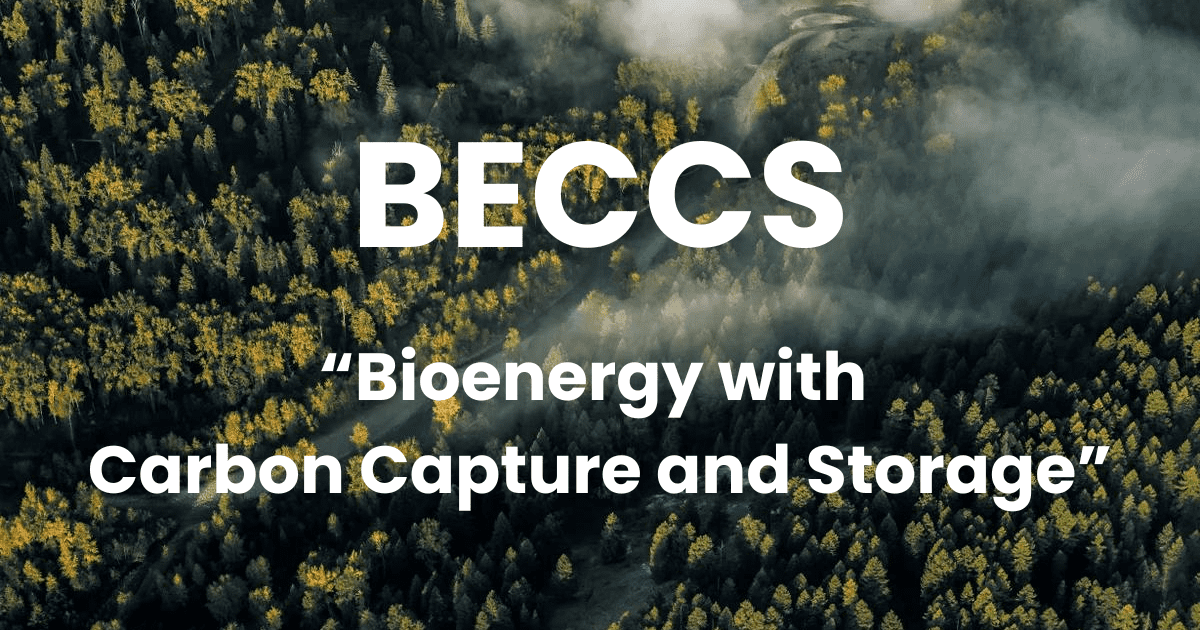Biochar as Negative Emission Technology
In the face of the urgent situation of global warming, more and more experts and authorities are turning their attention to Negative Emission Technology (NET) as an important part of achieving carbon neutrality. Negative Emission Technology (NET) is the removal of carbon dioxide (CO2) from the atmosphere, thereby effectively offsetting carbon emissions from human production and living activities. In line with the targets set by the Paris Agreement, we need to limit global warming to 2°C above pre-industrial levels. Given the limitations of existing CO2 reduction and zero-emission technologies, NETs are seen as key to achieving this ambitious goal.
There are several types of NETs, each with its own unique approach to capturing and storing CO2. Some of the most prominent include the following:
Afforestation and Reforestation: as the name suggests, this well-established technology involves the planting of trees to increase forest area or to restore degraded forests. Trees absorb carbon dioxide during photosynthesis, making them an effective method of carbon sequestration. However, plants have a limited lifespan and can only store carbon for decades to centuries, and stored carbon dioxide is eventually released. For the length of the human lifespan, forests can store enough carbon for as long as we live.

Direct Air Capture and Storage (DACCS): DACCS technology captures CO2 directly from the atmosphere and then stores it permanently. Although DACCS is very effective, the technology is still in the research and development stage, and the 'direct air capture' part of the process is too costly. It cannot be promoted and applied on a large scale.

Bioenergy and Carbon Capture and Storage (BECCS): BECCS combines the production of bioenergy (from biomass) with the capture and storage of the resulting CO2 emissions. By means of photosynthesis in plants, BECCS converts atmospheric carbon dioxide into organic matter, which is accumulated and stored as biomass. This biomass can be burned directly to generate heat, or through physical and chemical reactions to generate other clean energy sources, achieving the goal of a carbon-negative biomass feedstock from generation to utilisation.
As defined by the International Biochar Initiative (IBI), biochar is a solid obtained by thermochemical conversion (pyrolysis) of biomass in an anaerobic environment. In layman's terms, it is a material similar to charcoal, but note that it can also be made from agricultural wastes, such as rice husks, straw, nut shells, etc. We collect these waste biomass and convert it into a renewable fuel (syngas) and a solid product (biochar). By converting the biomass into biochar, the carbon is sequestered in a stabilised form.The IPCC has officially classified biochar as an emissions-negative technology with multiple synergistic benefits to combat climate change.
Biochar converts biomass into a carbon-rich solid product through a thermal pyrolysis process that is stable in the soil for hundreds of years, effectively sequestering carbon in the soil and reducing atmospheric CO2 concentrations.
.png)
Biochar For Soil Improvement
Biochar's porous structure and high specific surface area make it an excellent soil amendment. It can effectively improve the physical properties of the soil and increase its water retention and permeability. At the same time, biochar provides a habitat for beneficial microorganisms, which promotes the increase of soil biodiversity and soil fertility, thus improving crop yield and quality.
Biochar Used as Animal Feed Additive
Biochar is rich in mineral elements and trace elements. Adding the right amount of biochar to animal feed can improve the nutritional value of the feed, enhance its immunity and disease resistance, and strengthen the animal's physique. In addition, biochar can adsorb harmful substances and microorganisms in the feed and reduce the occurrence of intestinal diseases in animals.
Biochar Serves as the Sustainable Fuel
As a renewable energy carrier, biochar has great potential to replace fossil fuels. With good combustion performance, high calorific value and clean and non-polluting combustion process, biochar can be used for heating, warming and power generation. Although carbon dioxide is released during the combustion process of biochar, this carbon dioxide comes from the existing carbon dioxide absorbed by the biomass from the atmosphere. Therefore, the use of biochar as a fuel does not lead to a net increase in atmospheric CO2 and indirectly reduces CO2emissions from fossil fuel combustion.
There are several types of NETs, each with its own unique approach to capturing and storing CO2. Some of the most prominent include the following:
Afforestation and Reforestation: as the name suggests, this well-established technology involves the planting of trees to increase forest area or to restore degraded forests. Trees absorb carbon dioxide during photosynthesis, making them an effective method of carbon sequestration. However, plants have a limited lifespan and can only store carbon for decades to centuries, and stored carbon dioxide is eventually released. For the length of the human lifespan, forests can store enough carbon for as long as we live.

Direct Air Capture and Storage (DACCS): DACCS technology captures CO2 directly from the atmosphere and then stores it permanently. Although DACCS is very effective, the technology is still in the research and development stage, and the 'direct air capture' part of the process is too costly. It cannot be promoted and applied on a large scale.

Bioenergy and Carbon Capture and Storage (BECCS): BECCS combines the production of bioenergy (from biomass) with the capture and storage of the resulting CO2 emissions. By means of photosynthesis in plants, BECCS converts atmospheric carbon dioxide into organic matter, which is accumulated and stored as biomass. This biomass can be burned directly to generate heat, or through physical and chemical reactions to generate other clean energy sources, achieving the goal of a carbon-negative biomass feedstock from generation to utilisation.
Biochar as Negative Emission Technology
What is Biochar?
As defined by the International Biochar Initiative (IBI), biochar is a solid obtained by thermochemical conversion (pyrolysis) of biomass in an anaerobic environment. In layman's terms, it is a material similar to charcoal, but note that it can also be made from agricultural wastes, such as rice husks, straw, nut shells, etc. We collect these waste biomass and convert it into a renewable fuel (syngas) and a solid product (biochar). By converting the biomass into biochar, the carbon is sequestered in a stabilised form.The IPCC has officially classified biochar as an emissions-negative technology with multiple synergistic benefits to combat climate change.
What can we do with biochar?
Biochar Promotes Carbon SequestrationBiochar converts biomass into a carbon-rich solid product through a thermal pyrolysis process that is stable in the soil for hundreds of years, effectively sequestering carbon in the soil and reducing atmospheric CO2 concentrations.
.png)
Biochar For Soil Improvement
Biochar's porous structure and high specific surface area make it an excellent soil amendment. It can effectively improve the physical properties of the soil and increase its water retention and permeability. At the same time, biochar provides a habitat for beneficial microorganisms, which promotes the increase of soil biodiversity and soil fertility, thus improving crop yield and quality.
Biochar Used as Animal Feed Additive
Biochar is rich in mineral elements and trace elements. Adding the right amount of biochar to animal feed can improve the nutritional value of the feed, enhance its immunity and disease resistance, and strengthen the animal's physique. In addition, biochar can adsorb harmful substances and microorganisms in the feed and reduce the occurrence of intestinal diseases in animals.
Biochar Serves as the Sustainable Fuel
As a renewable energy carrier, biochar has great potential to replace fossil fuels. With good combustion performance, high calorific value and clean and non-polluting combustion process, biochar can be used for heating, warming and power generation. Although carbon dioxide is released during the combustion process of biochar, this carbon dioxide comes from the existing carbon dioxide absorbed by the biomass from the atmosphere. Therefore, the use of biochar as a fuel does not lead to a net increase in atmospheric CO2 and indirectly reduces CO2emissions from fossil fuel combustion.



.png)
.jpg)
